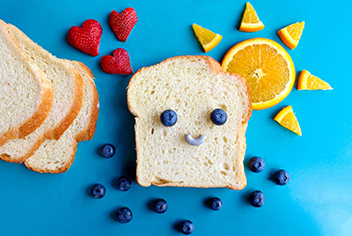How to encourage your kids to eat healthy
When packing your child’s school lunches or sending them to a school that offers them lunch, it’s important that children not only have healthy options, but are willing to eat them.
 Parents often find themselves challenged by their child’s “picky eating,” but there are a number of strategies that can be implemented to help children expand their pallet to healthier choices.
Parents often find themselves challenged by their child’s “picky eating,” but there are a number of strategies that can be implemented to help children expand their pallet to healthier choices.
Lead by example
Parents who eat diverse foods and snack on healthy options provide an opportunity for children to mirror positive behavior. When parents eat healthy, children notice. When parents choose chips for a snack but suggest baby carrots to their child, the scenario may give off an impression that the chips are more desirable. Be mindful of your eating. Introduce healthy swaps to daily meals like cauliflower rice, zucchini noodles and more.
Avoid using food as a reward
Using food as a reward can lead children to develop an unhealthy relationship with food. When children are taught at a young age to associate food with behavior, they may carry this mindset throughout life. As an alternative, reward your child with genuine praise and encouragement to reaffirm positive actions.
Don’t tie labels to food
While it’s tempting to label soda as “bad” and apples as “good,” the strategy can sometimes backfire. An effective alternative is to relate different foods with children’s interests and hobbies. Explain to young children that particular foods help them achieve their goals. Explain simple facts like how carrots will help vision and protein will give energy. Children are more likely to respond positively to healthy foods if they know there are great benefits. Teach children to understand the effects that different foods have on their body.
Give your child options
Give your child a range of healthy fruit and vegetable options to try. Determine the fruits and vegetables they prefer by using family dinnertime to experiment with new picks and ask children to rate new picks one through five. Gauging their preference will help you to know which fruits and vegetables to serve more often, and which to bring back now and then to test the waters. Creating a space in the refrigerator for healthy snack options ensures that children are eating healthy while also having a say in their choice. Healthy snacks may include celery and peanut butter, apples, baby carrots and sliced cucumber.
Make food fun
There are many healthy snack ideas that are both nutritious and creative enough to entice even the pickiest of toddlers. The classic “ants on a log” snack packs protein and is composed of only the three ingredients celery, peanut butter and a topping of choice like sliced grapes, nuts or raisins. Parents can put together “butterfly snack bags” to put a fun spin on snacks and encourage children to eat a variety of healthy fruits and vegetables.
For more tips and free child development support, call the Birth to Five Helpline at 877-705-KIDS (5437)
or download the Birth to Five Helpline app!
All content in this article, including any advice or commentary from Southwest Human Development staff and/or others, should be considered an opinion and is provided for informational purposes only. The content is not intended to be a substitute for medical or other professional advice, diagnosis or treatment. Always seek the direct advice of your own trusted professional with any questions or concerns you may have regarding the child/ren in your care. Southwest Human Development does not recommend or endorse any specific tests, products, procedures or other information that may be mentioned in this article. You may contact Southwest Human Development’s Birth to Five Helpline at 1-877-705-KIDS (5437) to speak with one of our early childhood professionals for personalized assistance. Birth to Five Helpline specialists are available Monday through Friday from 8 a.m. to 8 p.m.
